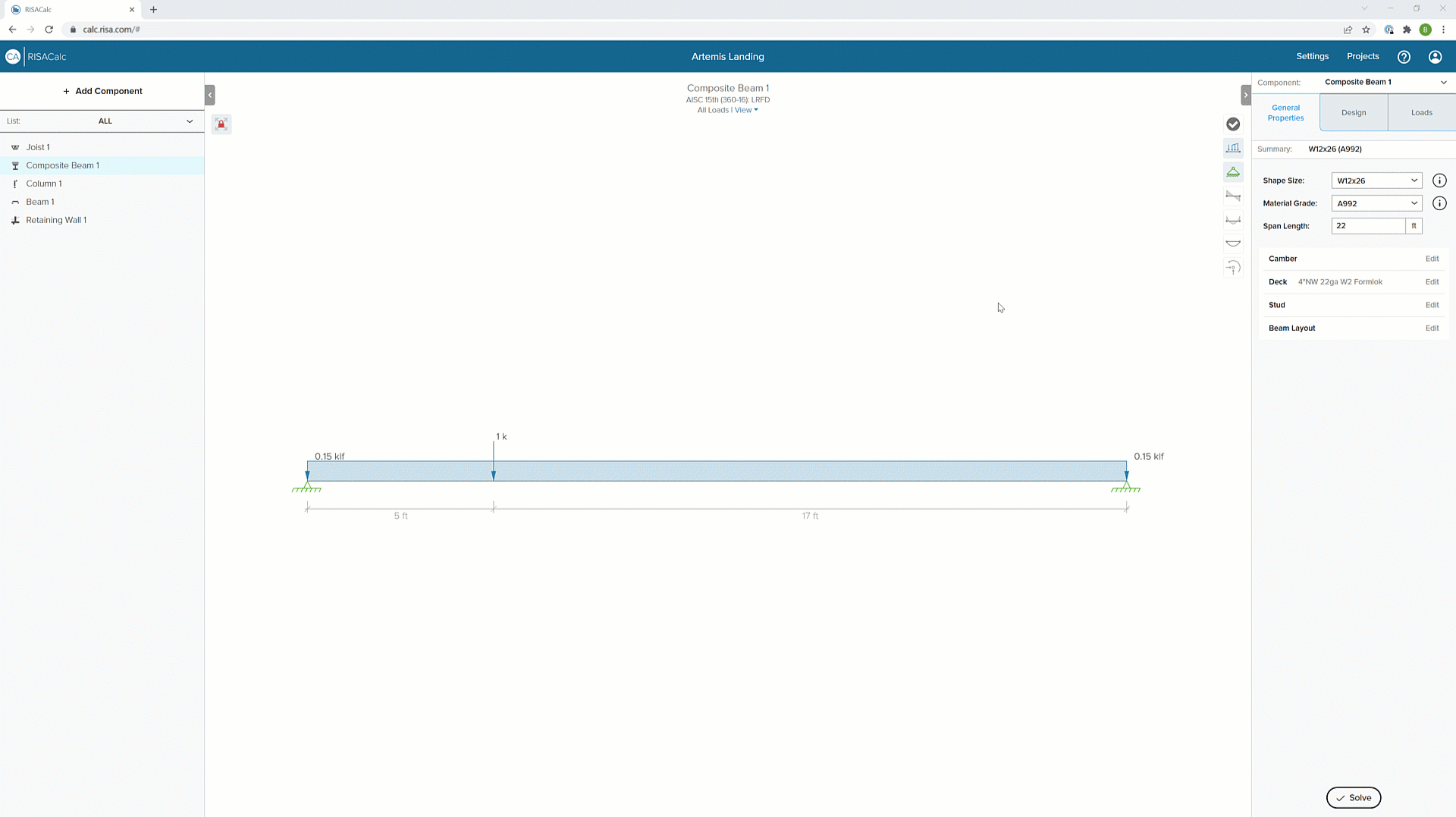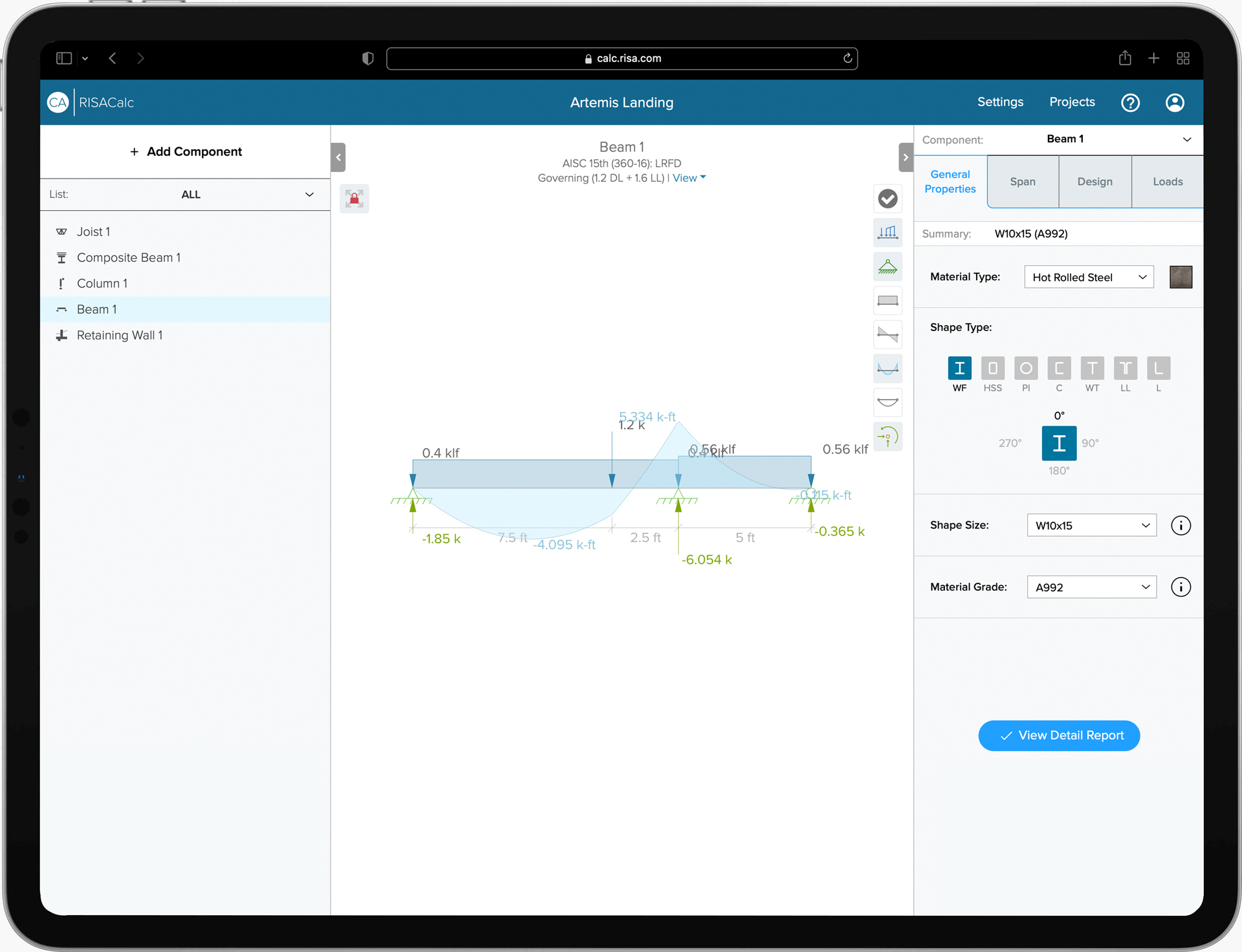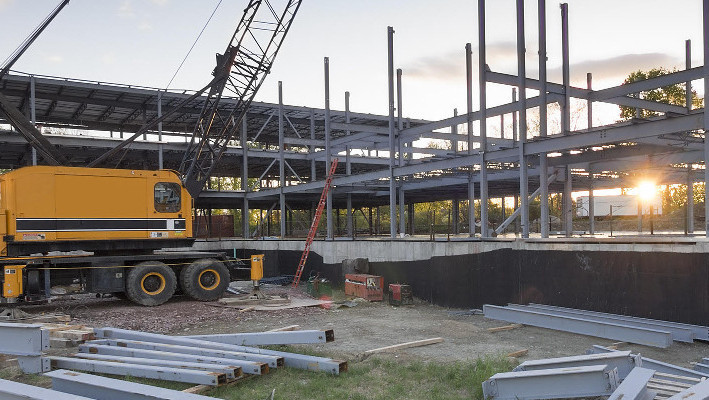RISACalc
The Perfect Calculator for Structural Design
Version 4
RISACalc Support Resources
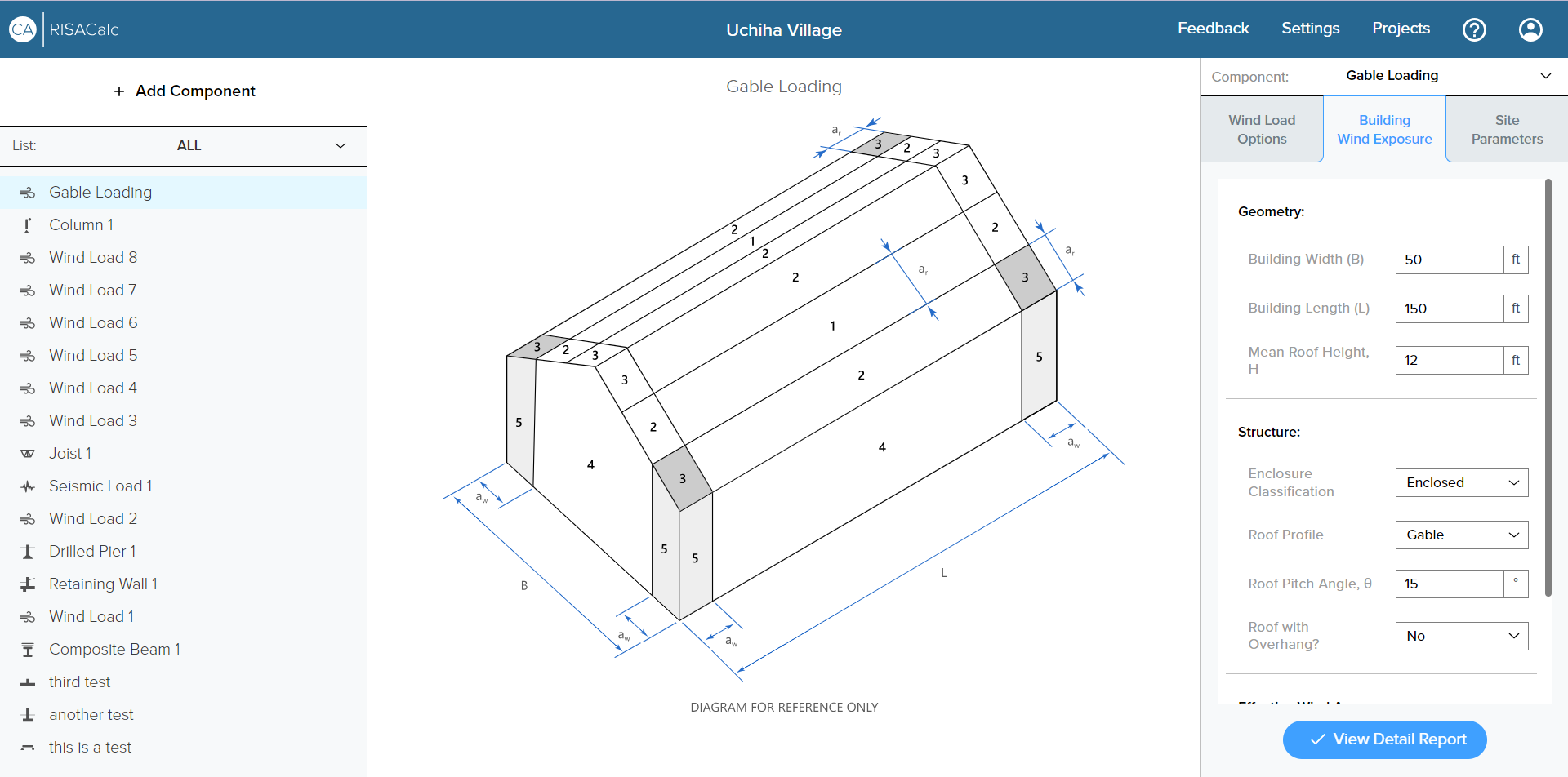
What's New in RISACalc
The latest update to RISACalc includes wind load generation for Components and Cladding (C&C) with ASCE 7-16 and ASCE 7-10.
Learn More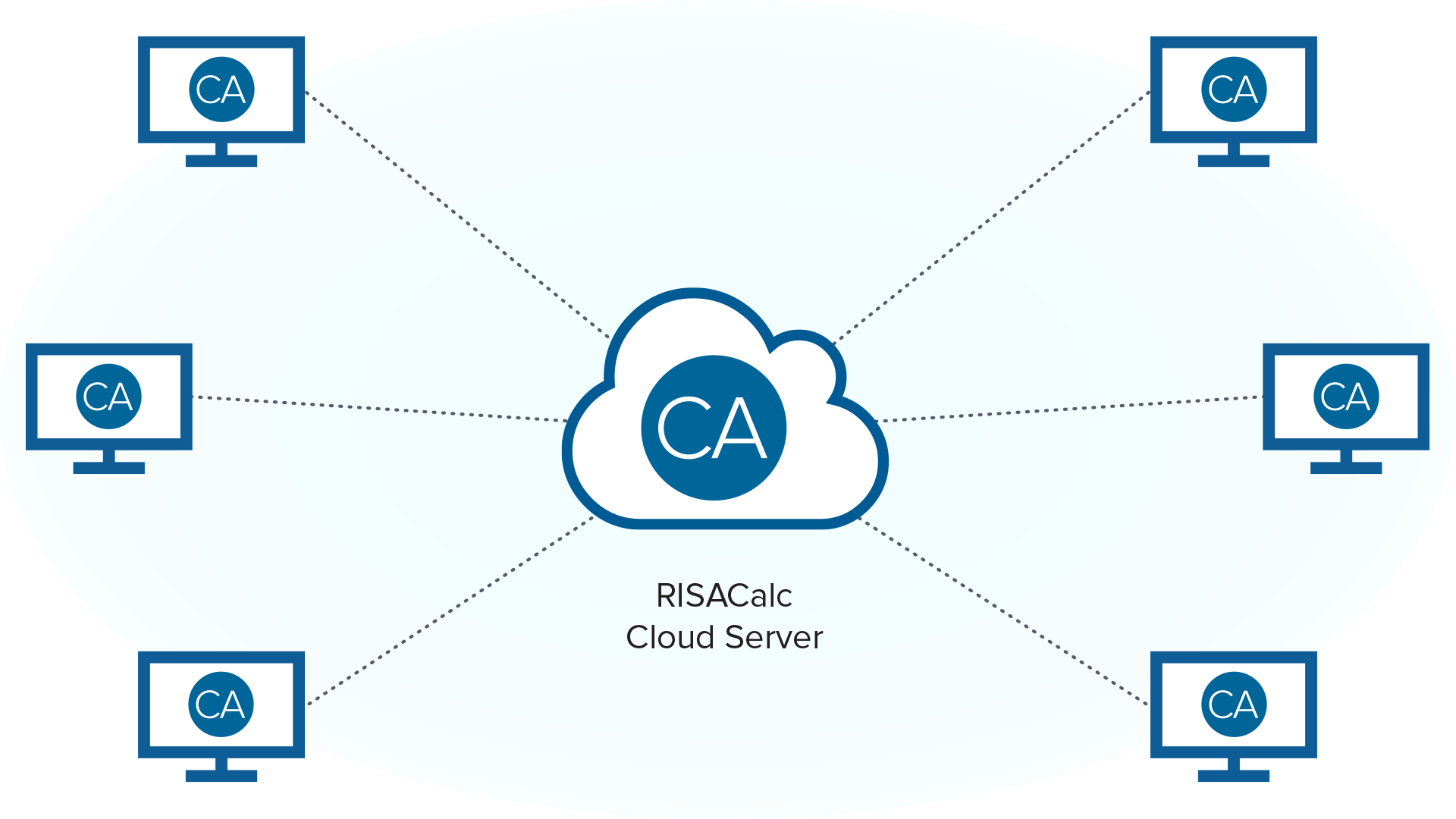
Effortless Cloud-Based Collaboration
Easily create and share project files with your entire office, allowing design work to be completed more efficiently than ever before.
RISACalc’s web-based interface provides engineers with instant feedback while also allowing full control over inputs such as geometry, design information and loading. Easily create and share project files with your entire office. RISACalc allows engineers to completely visualize the analysis and design of a structural component.
Graphically apply loads, including point loads and distributed loads anywhere on the beam. Automatically generate code based load combinations with the click of a button. Review and print comprehensive detailed reports of composite, wood, and steel beams, including expandable force diagrams and design calculations.
Features
- Point Loads
- Point Moments
- Uniform & Tapered Area Loads
RISACalc uses state-of-the-art finite element mesh for analysis of subgrade elements. Automatically calculated soil spring stiffness based on soil subgrade modulus and slab tributary area to give realistic results. Include soil overburden and passive soil resistance when designing footings and retaining walls.
Features
- Optimized Reinforcement
- Soil Spring Stiffness
- Auto Finite Element Mesh
Generate seismic loads on buildings and non-structural components according to ASCE 7 using RISACalc. Seismic System Factors can be selected from Table 12.2-1 or select Custom to use custom values. Canvas graphics help illustrate the elevation and weight of each floor.
Features
- Elevation View
- Seismic Factors
- Site Details
Generate wind loads on buildings and non-structural components according to ASCE 7 using RISACalc. Main Wind Force Resisting System (MWFRS) or Components & Cladding (CC) method can be selected for ASCE 7-10 and 7-16 . Canvas graphics help illustrate each floor's elevation for MWFRS and each roof profile from ASCE chapter 30 for C&C.
Features
- Elevation View
- Effective Wind Area
- Site Details
